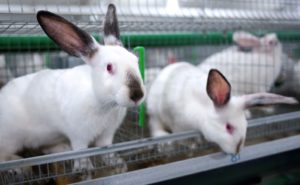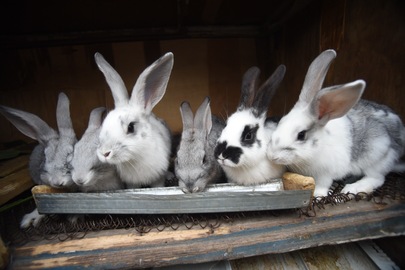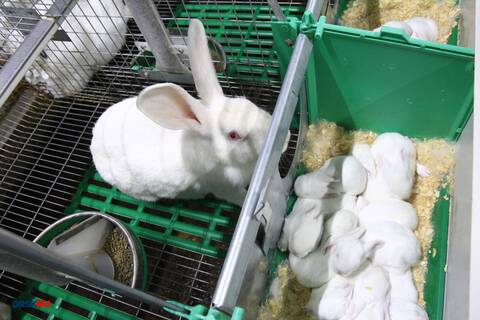Aquator is an innovative rabbit farming technology aimed at increasing the productivity of rabbit meat production.
Innovative rabbit farming technologies
“Rabbits are not only valuable fur, but also 3-4 kilograms of dietary, easily digestible meat”
Vladimir Pertsov
The developing baby food industry and the desire of our compatriots for a healthy lifestyle spurs the demand for rabbit meat. Over the past ten years, the production of rabbit meat in the country has grown markedly. However, the growth rate of rabbit production still lags behind the demand for this useful product.
As in other branches of farming, increasing the productivity of rabbit meat production is associated with the development and implementation of new highly efficient technologies.
However, in the conditions of modern agricultural production, productivity is not the only indicator of its effectiveness. High quality, affordability and, of course, environmental cleanliness, these are the main requirements that consumers place on agricultural products. The production of rabbit meat is no exception.
The use of Aquator, an innovative technology in commercial rabbit production, will ensure the production of meat that meets the highest requirements for the product produced in the industry. The results of the test fattening of rabbits in one of the farms of the Kuban Region can serve as confirmation of what has been said.



The Aquator farming technology testing at a commercial rabbit farm
In the spring of 2018 on the basis of the farm of Shangina M.L. (Krasnodar Region, Seversky district) experimental fattening of rabbits was carried out. Two groups of animals aged 2 months were selected for these purposes. Each group consisted of 8 individuals of the “White Giant” breed and 8 individuals of the “Soviet Chinchilla” breed, four males and four females each (a total of 16 individuals). Both groups were vaccinated against myxomatosis and hemorrhagic fever. One group was considered a control group, the other an experimental group. The fattening period was two months — from February 3 to April 3.
Feeding was carried out with alfalfa hay and mixed feed for rabbits of the PROVIMI company. Feed composition:
- crude protein — 170 g/kg
- crude fat — 20 g/kg
- crude fiber — 135 g/kg
- calcium — 11 g/kg
- iron – 6 g/kg
- chlorine — 2 g/kg
- sodium – 2.2 g/kg
- lysine — 8 g/kg
- methionine + cystine — 6 g/kg
- Vitamin A — 11000 IU/kg
- Vitamin D3 — 1700 IU/kg
- Vitamin E — 50 IU/kg
- Diclazuril — 1 g/ton
Grain products, herbal flour, beet pulp, grain meal, vitamin and mineral premix, limestone, vegetable oil, salt, phosphates, amino acids, probiotic, antioxidant.
Watering of animals was carried out with water from a well, the fence from the lower horizon was 50 meters. The water has a sanitary certificate issued by the sanitary and epidemiological service for the Seversky district of the Krasnodar Region.
During this period, the experimental group of animals received water treated with the Aquator device through a somatotropic hormone matrix with the addition of a peptide preparation of whole blood hydrolysate from Bioeragroup. The concentration of the drug in the water was maintained at 0.1%. The conditions of keeping, feeding and watering the animals were identical in both the control and experimental groups.
The animals were slaughtered at the age of 4 months. Control weighing of carcasses showed that in the experimental group there is a steady excess of weight over the indicators of the control group. The average weight of the carcass of the control group was 2.08 kg, while the average weight of the carcass in the experimental group reached 2.3 kg (more than 10% higher than the control), which indicates the stability of the effect of specially prepared water on the animal’s body.
At the same time, the effect of a sharp (by 200-250 g) excess weight of individual individuals (both males and females) was observed above the average. At the same time, the increase in the weight of the carcass was not due to a layer of subcutaneous fat, but due to muscle mass.
The use of water obtained from the erythropoietin matrix led to another effect difficult to explain. When the rabbit was watered during pregnancy with activated water, it had a reduction in the gestation period, in some cases up to three days.
The results obtained show that the use of the Aquator technology for fattening rabbits allows you to significantly increase the commercial productivity of rabbit farming, and get additional profit without much expense.